What's New
Displaying results 2261 - 2270 of 4052
Resource | Publications,
To reduce new HIV infections globally to fewer than 500 000 by 2020, a step towards ending the HIV epidemic as a public health threat by 2030, we need to Fast-Track the response, including renewed commitment to, sustained funding for and scaled-up implementation of HIV prevention programmes.
This paper discusses six elements of HIV prevention efforts that are crucial to achieve the target: commitment, focus, synergies, innovation, coverage and accountability.
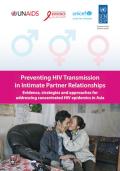
Resource | Publications,
Preventing HIV Transmission in Intimate Partner Relationships: Evidence, strategies and approaches for addressing concentrated HIV epidemics in Asia provides evidence-based guidance to policymakers in Asia so that national HIV responses give appropriate priority to prevention efforts among key populations and their intimate partners, as well as those in serodiscordant relationships. Scaling up efforts to prevent intimate partner transmission of HIV will help countries to meet targets to halve sexual transmission of HIV, eliminate mother-to-child transmission, reduce AIDS-related maternal deaths, and address gender inequalities.
This report by UNDP, UNICEF and UNAIDS responds to data which shows that new infections in the long-running HIV epidemics in Asia, such as in Cambodia, China, India, Indonesia, Myanmar and Thailand, are on the increase among intimate partners of high risk populations. Reviewing the interplay of factors that affect sexual behaviours and decision making among key populations and people living with HIV, the report recommends strategies that need to be adopted by countries for a more comprehensive response to intimate partner transmission.
The report argues that efforts to address intimate partner transmission of HIV should concentrate on the interplay of factors that affect sexual behaviour and decision-making among key populations and people living with HIV who know their status, including how they negotiate safer sex and make contraceptive choices with their intimate partners.
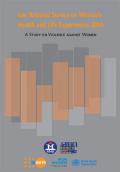
Resource | Publications,
There is growing recognition globally and also in Lao PDR that Violence against Women (VAW) is a serious public health problem and a violation of women's human rights. Yet in Lao PDR, VAW is culturally tolerated. According to the Lao Social Indicator Survey (LSIS) 2011-2012, 58% of women and 49% of men reported that VAW was justified if women did not adhere to traditional gender norms, roles and relations. However, this finding only sheds a small amount of light onto the true scale of the problem. Although small-scale studies have been undertaken on VAW, no comprehensive and extensive nationwide study has followed. Against this background, the National Study on Women's Health and Life Experiences 2014 was conducted to collect much needed evidence to develop an effective policy-making response to the issue.
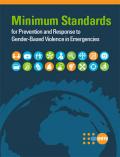
Resource | Publications,
Gender based violence is a life-threatening, global health and human rights issue that violates international human rights law and principles of gender equality. In emergencies, such as conflict or natural disasters, the risk of violence, exploitation and abuse is heightened, particularly for women and girls. UNFPA's "Minimum Standards for Prevention and Response to GBV in Emergencies (GBViE)" promote the safety and well being of women and girls in emergencies and provide practical guidance on how to mitigate and prevent gender-based violence in emergencies and facilitate access to multi-sector services for survivors.

Resource | Publications,
"From Insult to Inclusion: Asia-Pacific report on school bullying, violence and discrimination on the basis of sexual orientation and gender identity” is the first comprehensive regional review to focus specifically on the issue of bullying based on sexual orientation and gender identity or expression (SOGIE). The report details the extent of the problem in Asia-Pacific, the devastating impact of this type of abuse, and the measures governments are taking and could take to address it.
The primary audience for this report is education policy-makers and other stakeholders responsible for child protection and human rights protections in Asia-Pacific. This includes, most importantly, ministries of education, but also ministries responsible for child welfare and development, health, and youth, as well as national human rights institutions. This includes both those working at the central level, as well as those at sub-national levels.
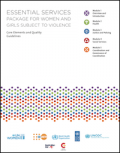
Resource | Publications,
The United Nations Joint Global Programme on Essential Services for Women and Girls Subject to Violence, a partnership by UN Women, UNFPA, WHO, UNDP and UNODC, aims to provide greater access to a coordinated set of essential and quality multi-sectoral services for all women and girls who have experienced gender based violence.
The Programme identifies the essential services to be provided by the health, social services, police and justice sectors as well as guidelines for the coordination of Essential Services and the governance of coordination processes and mechanisms. Service delivery guidelines for the core elements of each essential service have been identified to ensure the delivery of high quality services, particularly for low and middle income countries for women and girls experiencing violence. Taken together, these elements comprise the “Essential Services Package”.
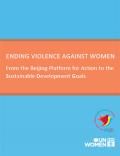
Resource | Publications,
The document provides a summary of the trends in national implementation of the Platform for Action, specifically in relation to one of the identified critical areas of concern, violence against women, as well as an overview of the role of UN Women in the 2030 Agenda for Sustainable Development, in particular, the development of the Sustainable Development Goals (SDGs) and SDG 5, "Achieve Gender Equality and Empower all Women and Girls."
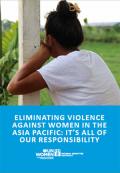
Resource | Publications,
Violence against women has been described as a global issue of 'epidemic proportions', and is perhaps the most widespread and socially tolerated form of human rights violations. Women are affected by different forms of violence at different stages of their lives. These include (but are not limited to) violence by intimate partners and family members, sexual violence, trafficking, femicide (including dowry killings), female genital mutilation, and child or forced marriage.
A world where women are free of the threat of violence is one in which both individual women and the society of which they are a part is better off. Violence against women is not only a gross violation of women's human rights, but causes both a range of financial and health issues for individual victims, and imposes significant economic and social costs on society.
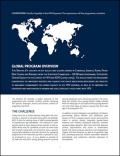
Resource | Publications,
AIDS is the leading cause of death among women of reproductive age worldwide. In addition to their biological susceptibility, HIV disproportionately affects women and adolescent girls because of their unequal cultural, social and economic status in society. Gender inequality, gender-based violence, and harmful traditional practices reinforce unequal power dynamics with men and limit women’s choices, opportunities and access to information, health and social services, education and employment.
This advocacy kit provides key results and lessons learned in Cambodia, Jamaica, Kenya, Papua New Guinea and Rwanda under the European Commission–UN Women programme, "Supporting Gender Equality in the Context of HIV and AIDS (2009–2013)", which demonstrates the important progress and transformational changes that can derive from investments targeted towards implementation of commitments to gender equality. These include policies, programmes and budgets, as well as empowering the leadership and participation of women and girls, especially those living with HIV.
The advocacy kit provides a global overview of the programme and includes country profiles featuring the specific strategies, results and lessons learned in each of the five countries that were part of the programme.
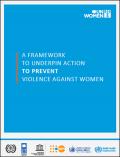
Resource | Publications,
Violence against women is a one of the most pervasive human rights violations in the world, rooted in gender inequality, discrimination and harmful cultural and social norms. It is also increasingly recognized as a public health issue that adversely affects the health of women. It is estimated that approximately 35 per cent of women worldwide have experienced intimate partner physical and/or sexual violence or non-partner sexual violence in their lifetime (WHO, 2013). The prevalence and serious impacts of this violence make it one of the most significant issues to be addressed in our time.
The framework contained in this document draws together contemporary knowledge and practice in violence prevention. Its focus is on addressing the root causes as well as risk and protective factors associated with VAW.





